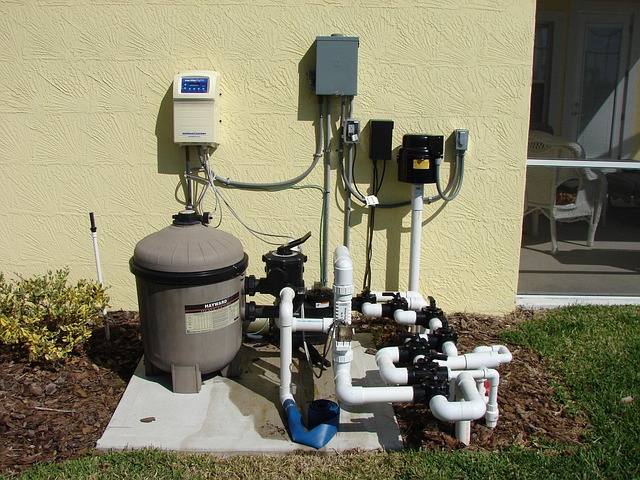Water storage tanks provide solutions for water storage
Water storage tanks offer practical solutions for collecting, storing, and preserving water for various applications. Whether used in residential, commercial, agricultural, or industrial settings, these containers play a crucial role in water management strategies worldwide. From ensuring water availability during shortages to supporting sustainable water conservation efforts, storage tanks have become essential infrastructure components for many properties and facilities.

Water storage tanks serve as essential components in water management systems across various sectors. From residential homes to large industrial facilities, these containers provide reliable solutions for storing water resources safely and efficiently. With increasing concerns about water scarcity and sustainability, understanding the various types, materials, applications, and maintenance requirements of water storage tanks becomes increasingly important for making informed decisions about water storage solutions.
Types of Water Storage Tanks
Water storage tanks come in numerous configurations designed to meet specific storage needs. Above-ground tanks are the most common and easiest to install, offering straightforward access for inspection and maintenance. These tanks typically require less excavation work and are more cost-effective for initial installation. Underground tanks, while more expensive to install, offer advantages such as temperature stability, space conservation, and protection from external elements.
Rainwater harvesting tanks are specifically designed to collect and store rainwater from rooftops and other catchment areas. These systems often include filtration components to ensure water quality. Pressure tanks, another common type, maintain consistent water pressure throughout plumbing systems by using compressed air to regulate water flow. Industrial storage tanks are typically larger and constructed with specialized materials to accommodate specific industrial processes and water quality requirements.
Water Tank Material Options
The material selection for water storage tanks significantly impacts durability, water quality, and overall performance. Plastic tanks, particularly those made from food-grade polyethylene, offer affordability, lightweight construction, and resistance to corrosion. These tanks are available in various sizes and colors, making them suitable for many residential applications. Stainless steel tanks provide exceptional durability and resistance to contamination, though they come at a higher price point. Their sleek appearance and longevity make them popular for both indoor and outdoor applications.
Concrete tanks offer remarkable durability and can be constructed on-site to meet specific size requirements. Their thermal mass helps maintain stable water temperatures, and they’re less susceptible to damage from extreme weather conditions. Fiberglass tanks resist corrosion and chemical degradation while remaining relatively lightweight compared to concrete options. For specialized applications, tanks made from materials like galvanized steel or wood (such as cedar) provide unique benefits for specific environmental conditions or aesthetic preferences.
Sizing and Capacity Considerations
Determining the appropriate tank size requires careful analysis of water usage patterns and storage needs. For residential applications, factors such as household size, water consumption habits, and local rainfall patterns play crucial roles in sizing decisions. A typical family of four might require a minimum capacity of 1,500-2,500 gallons for emergency water storage, while rainwater harvesting systems often need larger capacities based on roof area and local precipitation levels.
Commercial and agricultural applications demand more extensive calculations based on operational requirements, irrigation needs, and seasonal variations in water availability. Industrial facilities must consider process water demands, fire suppression requirements, and regulatory compliance when determining appropriate storage capacities. Additionally, physical space limitations, structural support capabilities, and local building codes may impose practical constraints on tank size and placement options.
Water Storage Tank Applications
Water storage tanks serve diverse purposes across multiple sectors. In residential settings, they provide emergency water supplies during service interruptions, support rainwater harvesting systems, and enable off-grid living arrangements. Agricultural operations rely on storage tanks for irrigation, livestock watering, and crop protection systems, helping farmers manage water resources efficiently throughout growing seasons.
Commercial buildings incorporate water storage for fire protection systems, cooling towers, and landscape irrigation. In industrial settings, specialized tanks store process water, treatment chemicals, and wastewater awaiting processing. Municipal water systems employ large-scale storage tanks to maintain consistent pressure throughout distribution networks and ensure adequate reserves for peak demand periods and emergency situations like firefighting.
Installing and Maintaining Water Storage Tanks
Proper installation begins with site preparation, including creating a level foundation capable of supporting the tank’s weight when filled. For above-ground installations, concrete pads or compacted gravel bases provide stable foundations, while underground installations require appropriate excavation, backfilling, and protection against flotation in high water table areas. Professional installation ensures proper connection to existing plumbing systems and compliance with local building codes.
Regular maintenance extends tank lifespan and preserves water quality. Inspection schedules should include checking for leaks, examining structural integrity, and assessing inlet/outlet connections. Cleaning protocols vary by tank material but generally involve draining, removing sediment, and sanitizing interior surfaces. Water quality testing helps identify potential contamination issues before they affect usability. Additionally, protecting tanks from extreme temperatures, direct sunlight, and physical damage contributes significantly to their longevity and performance.
By understanding the various aspects of water storage tanks—from types and materials to installation and maintenance—users can select appropriate solutions for their specific water storage needs. As water resource management continues to gain importance globally, efficient storage solutions will play an increasingly vital role in conservation efforts and sustainable water usage practices.




